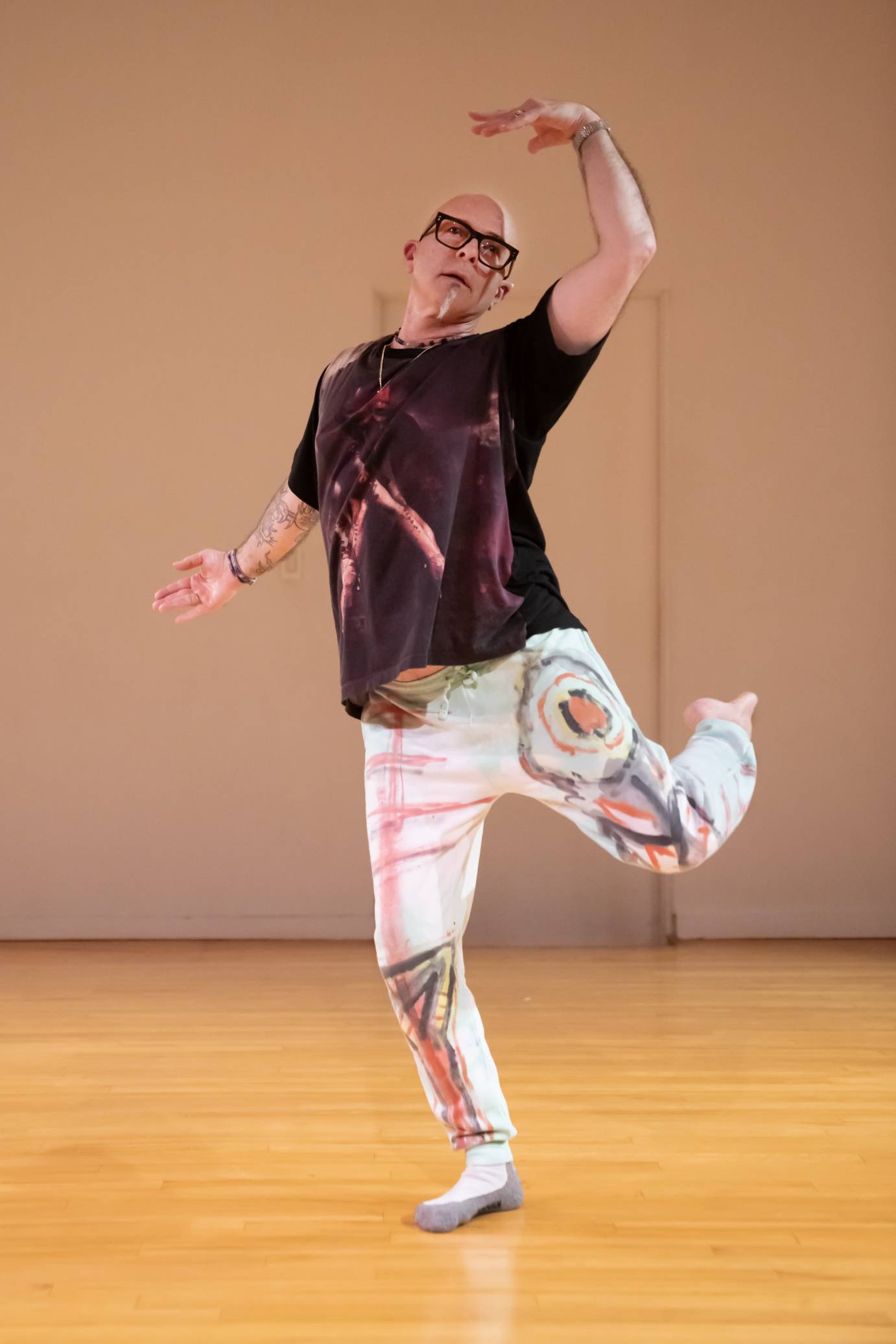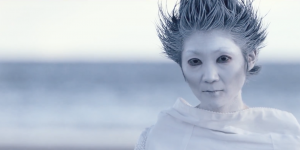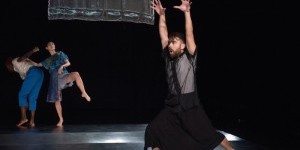IMPRESSIONS: Cathy Weis' SUNDAYS ON BROADWAY with Cayleen Del Rosario, Mina Nishimura, Stephen Petronio and Nami Yamamoto
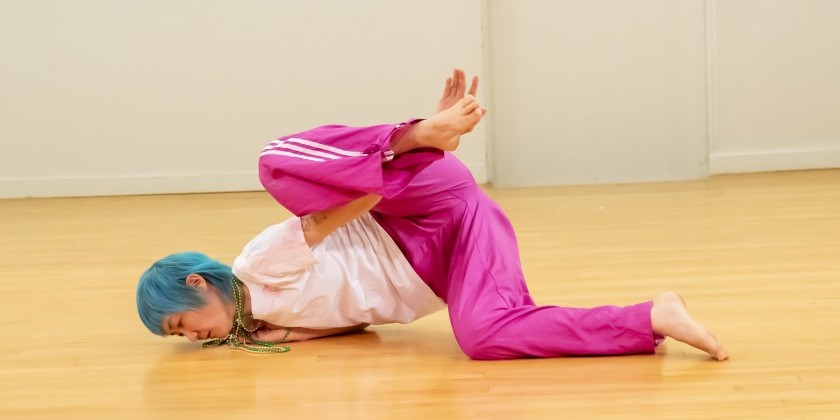
SUNDAYS ON BROADWAY
Presented by Cathy Weis Projects
Co-curators Cathy Weis and Owen Prum
WeisAcres loft, 537 Broadway, SoHo, NYC
May 19, 2024
between...no where….but I just am here (working title)
Choreographer: Nami Yamamoto
Performers: Nami Yamamoto, Mutsuyo Omatsu Isaacs, Takemi Kitamura, Leah Ogawa
The Dance at the Center
Choreographer: Cayleen Del Rosario
Performers: Cayleen Del Rosario, Chloë Engel, Angelina Hoffman, Owen Prum, Alysia Razman
Piano score: Ethan Gibbs
Pianist: Teo Hedigan
Ambient track: Collin Ruffino
Impulsive Score! Erased Score! Time Machine Score!
Choreographer and Performer: Mina Nishimura
This Is Me In The Room
Choreographer and Performer: Stephen Petronio
Filmmaker and curator, the diminutive Cathy Weis, perched on the shoulders of Owen Prum’s very tall frame, waves a back scratcher as scepter in the air, and reminds the packed audience that this May 19 performance concludes Sundays on Broadway for the season. Weis’ glasses hang on a long string around her neck. As Prum (a co-presenter this spring with Weis, and a founder of PAGEANT, the artist-run performance space) slowly turns, the glasses comically wrap around Prum’s head. This greeting, amusing, unplanned and festive, is in keeping with the freewheeling sensibility of the long-running series of ten years. Located in Weis’ loft (formally owned by artist Simone Forti), WeisAcres is reached by climbing three flights of creaky stairs. Audience members remove their shoes and neatly align them down the hallway before entering. Each takes their seat on a hodgepodge arrangement to enjoy the collegial atmosphere.
In keeping with the tenor of the series, there is nothing stuffy about this programming. Three of the four choreographers (Nami Yamamoto, Mina Nishimura, and Stephen Petronio) are longtime, experienced artists. Their open-hearted dances contrast with the contemplative Cayleen Del Rosario, who represents a younger generation. All four choreographers use text, either recorded in song or spoken live. The elders, Yamamoto and Petronio, act as bookends and present the most compelling works.
Currently titled, between...no where….but I just am here, choreographer Yamamoto, wearing fire-flames printed on her pants and an understated “Together We Dance,” on her black T-shirt, begins by tapping a bell, and striking a heroic Paul Taylor-like gesture: a deep lunge with arms reaching in an open U on the horizontal. To the emo songster, Jimmy Eats World’s, The Middle, Yamamoto bops around the stage, purple-flecked braids flying. Hips swing back and forth to the lyrics, “And don’t you worry, Just try your best, Everything will be just fine, Woo.” Yamamoto repeatedly tosses her body high, landing in a deep crouch with her back to the audience, reaching her arms through her legs. Three dancers, Leah Ogawa, Mutsuyo Omatsu Isaacs, Takemi Kitamura, two 2-foot-high puppets made of twisted butcher paper attached to performers’ feet, and squeezable balls in three ascending sizes that resemble female breasts, are introduced in subsequent sections. Isaacs sings the lyrics of The Middle in Japanese over the original. Most effecting is the running rhythm of the little empathic puppet and its handler that concludes this enchanting and wry work.
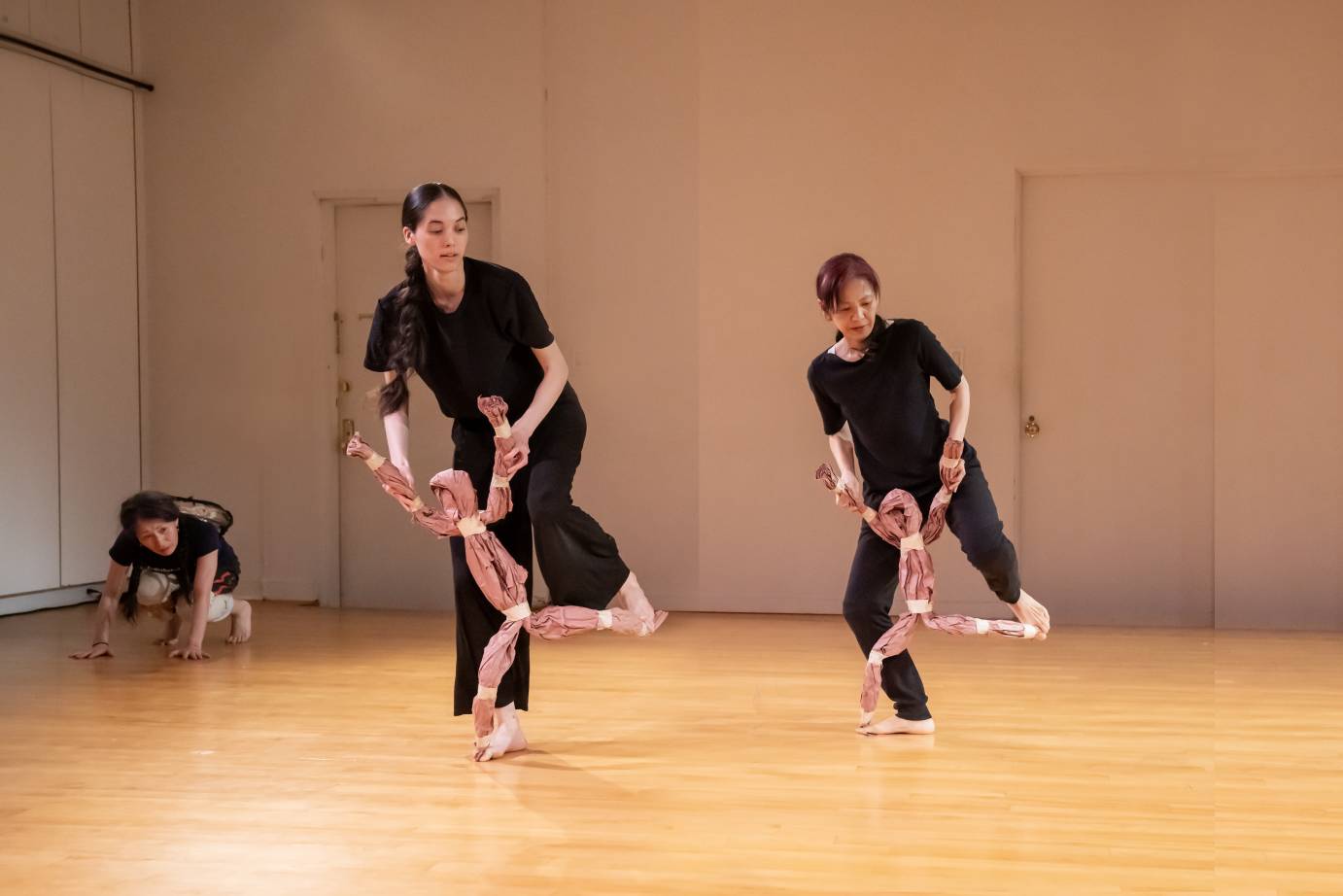
Nishimura opens with an explanation of three absurdist ideas with which she has been experimenting, Impulsive Score!, Erased Score!, Time Machine Score! (the dance’s title.) She says that she contemplated these scores in rehearsal while lying on her back staring at the ceiling. (Knowing chortles, presumably from other artists, are heard in the audience.) Nishimura, in bright pink sweats and turquoise hair, invites three audience members onstage to embody assigned characters that relate to the scores: Nishimura’s Grandmother, a Dinosaur, and an Alien (“You’re pulled to the future and covered in feelings. This Alien is from my high school thesis,” remarks Nishimura.) Nishimura’s friend, Sarah, assigns a Rabbit character to Nishimura. The four performers dance concurrently, each with fascinating aplomb, especially the man playing the dinosaur who inhabits the beast with a knowing herky-jerky attitude.
Del Rosario shows a thoughtful and spare dance, The Dance at The Center, based on the internal meanderings of her writing. Recited matter-of-factly from her Apple laptop (“a flower blooming and a flower having bloomed”), her insouciant physical demeanor (seated, she massages a foot resting on her bare thigh) curiously contrasts with the remote emotionalism of her four fine dancers, Chloë Engel, Angelina Hoffman, Alysia Razman, and Prum. What comes to this viewer's mind is author Wilkie Collins’ Woman in White (1859) and 60’s New Wave film. Add the ennui of Del Rosario’s Gen X and the combination is effective. Red-haired Hoffman, dressed in a white nightgown executes several chiseled shapes and a series of deep second positions. She eventually returns with a large lozenge of blood staining the front of her nightgown. The trio dances a series of spare though impassioned movements that illustrate Del Rosario’s psychoanalytic dreamscape, accompanied toward the end by a pianist’s agreeable ramblings.
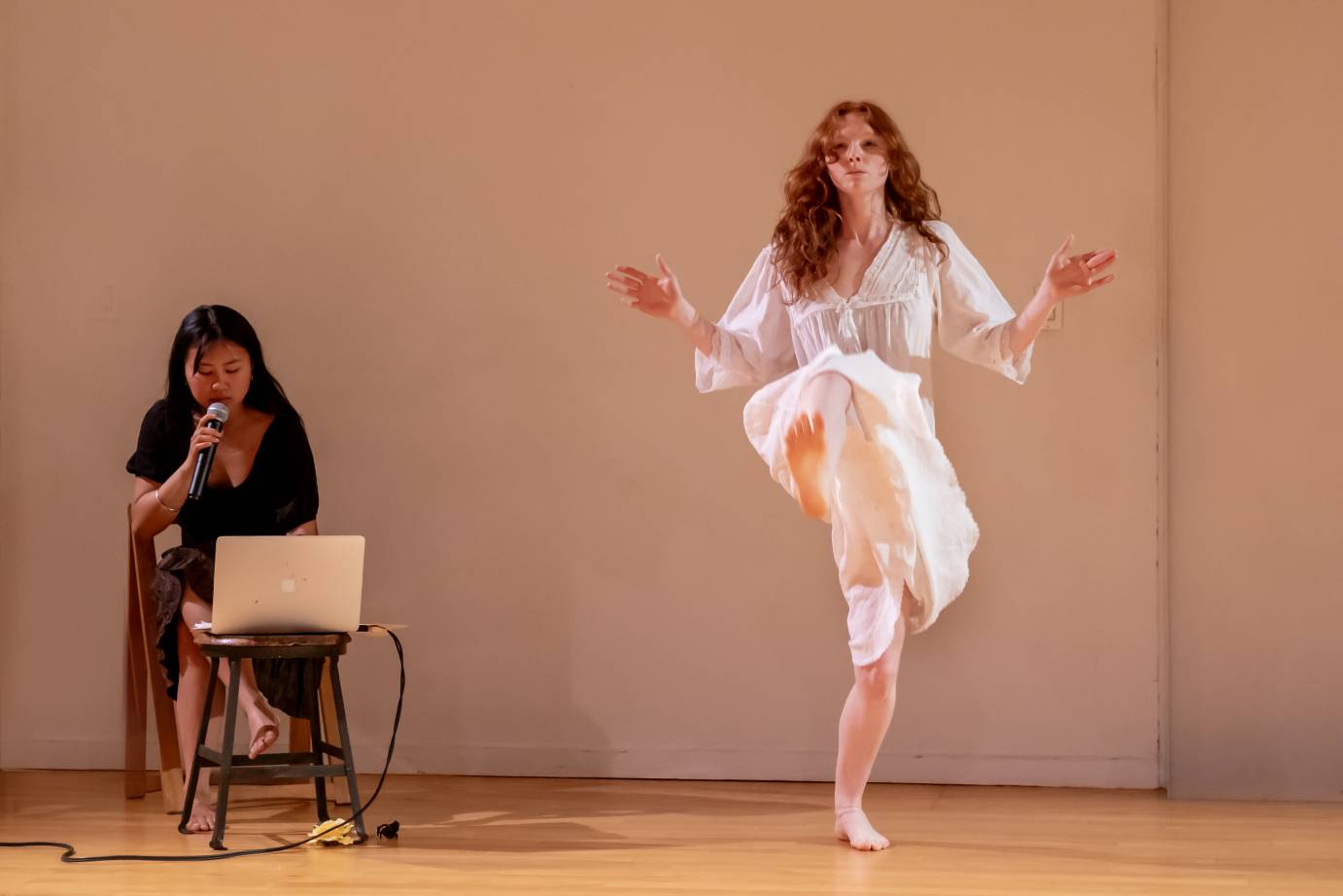
The award-winning choreographer, Petronio lists his bona fides, “cis male, bald, 68 years old, queer!”. In This is Me in the Room, he dances an improvisatory solo that physically references his early training and company membership with Trisha Brown. Brown’s signature fling of loose-limbs, head falling to the side, passés, and bending of the body are inhabited by Petronio. Costumed in rings, necklaces, tattoos, grey-haired mouche patch, big black glasses and choreographer Malcom x Betts’ tie-dyed sweatpants (he tells us), Petronio talks to himself and the audience as he dances. He recalls his dance antecedents who include Steve Paxton, Brown, Forti and Rudy Perez and remarks, as he hops on one leg, that they come with him into the studio. When he dances, he confides, “you can see them in me.” A vigorous solo, Petronio touchingly labors with his breath, not shying away from showing what he is experiencing. Confessing that he is “alone a lot” he strokes the outstretched palms of those in the front row and the audience sighs with understanding.
